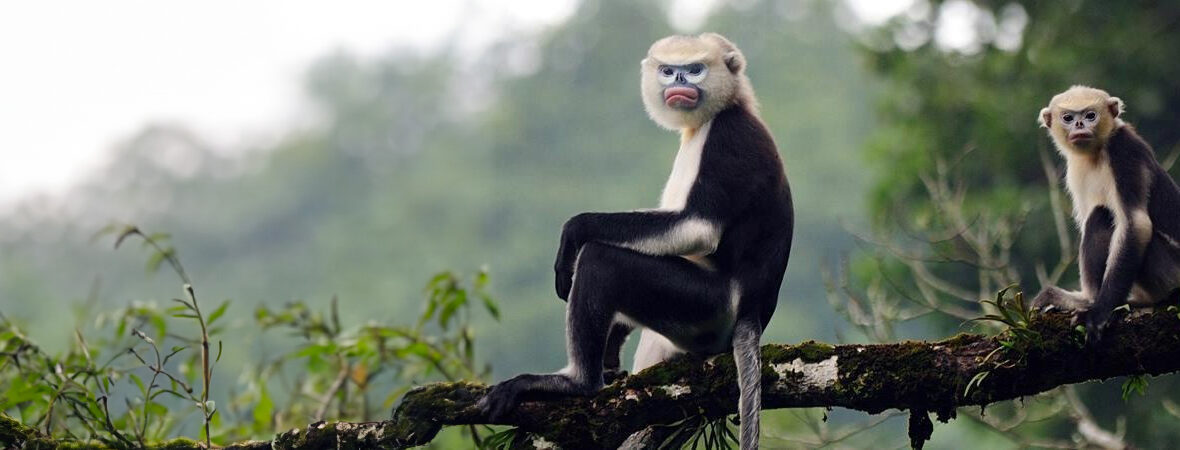
The Tonkin snub-nosed monkey, aka Dollman’s snub-nosed monkey, hails only from northern Vietnam. They dwell at elevations of up to 3,900 feet. Sadly, these primates face many threats such as habitat loss and destruction at the hands of residential and commercial developments, agriculture, mining, quarrying, utility lines, logging, and dams; hunting; and trapping. With a decreasing and already diminutive population, the IUCN lists these primates as Critically Endangered.
First the Stats…
Scientific name: Rhinopithecus avunculus
Weight: Up to 18 lbs.
Length: Up to 26 inches, plus up to a 36 inch tail
Lifespan: Up to 29+/- years
Now on to the Facts!
1.) The Tonkin snub-nosed monkey is the rarest of the 5 known snub-nosed monkey species.
2.) Their diet consists of leaves, flowers, fruits, and seeds.
3.) The specialized bacteria in their stomach breaks down plant cellulose and provides them with more calories which can be expended into more energy.
4.) As is the case with other monkeys, these critters are diurnal (active during the day).
5.) Small family groups often travel together, and a troop typically consists of a male, several females, and their offspring.
But wait, there’s more on the Tonkin snub-nosed monkey!
6.) Their daily routine consists of up to 40%+ resting, 23%+ on guard for possible threats, 10%+ grooming one another, and up to 3%+ at play.
7.) Like other primates, these critters are polygynous (1 male mates with multiple females).
Did you know…?
As of 2015 there were only an estimated 100 wild individuals remaining.
8.) Females undergo up to a 200 day gestation (pregnancy) that yields up to 2 infants.
9.) In a case of monkey see monkey do, female monkeys are very likely to be more attentive to their young due to the observation of other female snub-nosed monkeys being attentive to their young.
10.) It has been observed by researchers as well as hunters that these monkeys don’t always flee when approached by humans. They instead emit loud warning calls, and the male will often approach the perceived threat personally. This behavior, unfortunately, puts them at greater risk of being killed.
But wait, there’s still more on the Tonkin snub-nosed monkey!
11.) Due to the extensive habitat loss, and fewer individuals, there is a low amount of genetic variability in their population. This inbreeding could impact the likelihood that this species can continue to exist. Seeing as inbreeding, in part, can cause infertility.
12.) Their preferred habitat consists of primary forests that contains bamboo and broadleaf evergreen vegetation.
Did you know…?
Listed in Appendix I of the Convention of International Trade in Endangered Species (CITES), they are protected under the Vietnamese law, which prohibits their capture, killing, and/or trade. However, this is largely unenforced.
13.) Tonkin snub-nosed monkeys fill an important ecological niche in that, with their herbivorous diet, they spread seeds throughout the forest and help the forest grow.
14.) Sadly, they face the threat of heavy poaching for food as well as the wildlife black market. Families are often separated due to these threats.
15.) Fauna & Flora International has been working with the local communities to spread awareness about this species and help monitor their habitat.
Now a Short Tonkin Snub-Nosed Monkey Video!
Be sure to share & comment below! Also, check out the Critter Science YouTube channel. Videos added regularly!
Want to suggest a critter for me to write about? Let me know here.
Some source material acquired from: Wikipedia & IUCN
Photo credit: Earth.com



